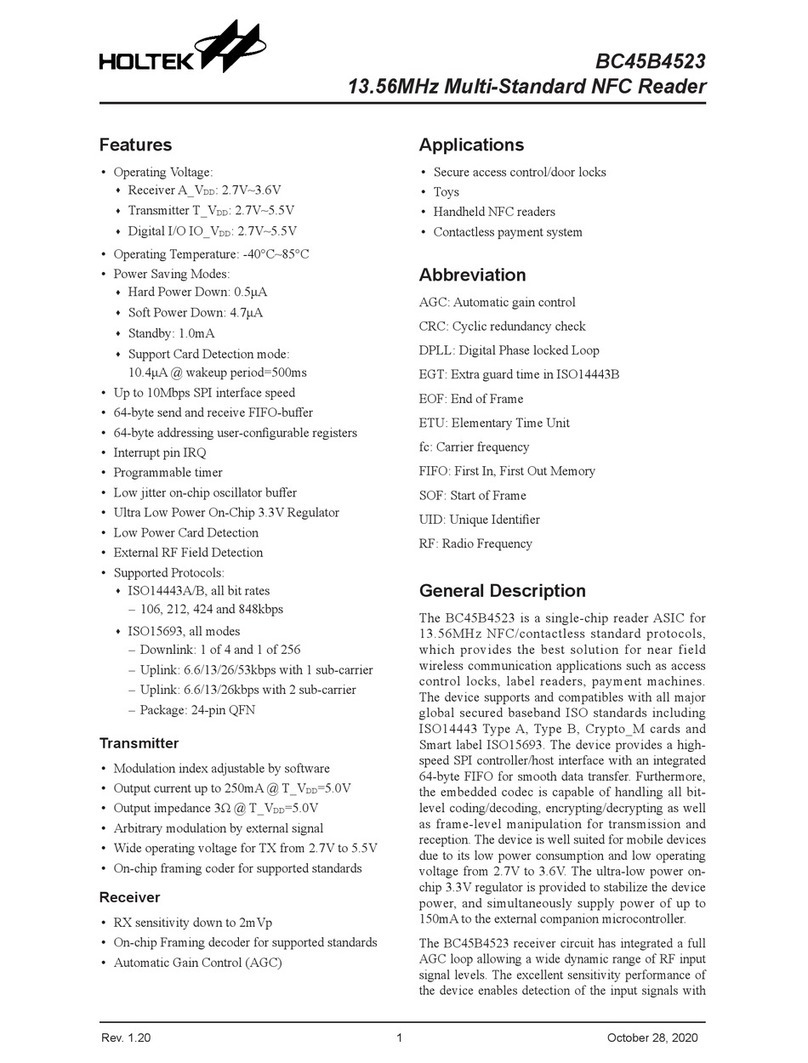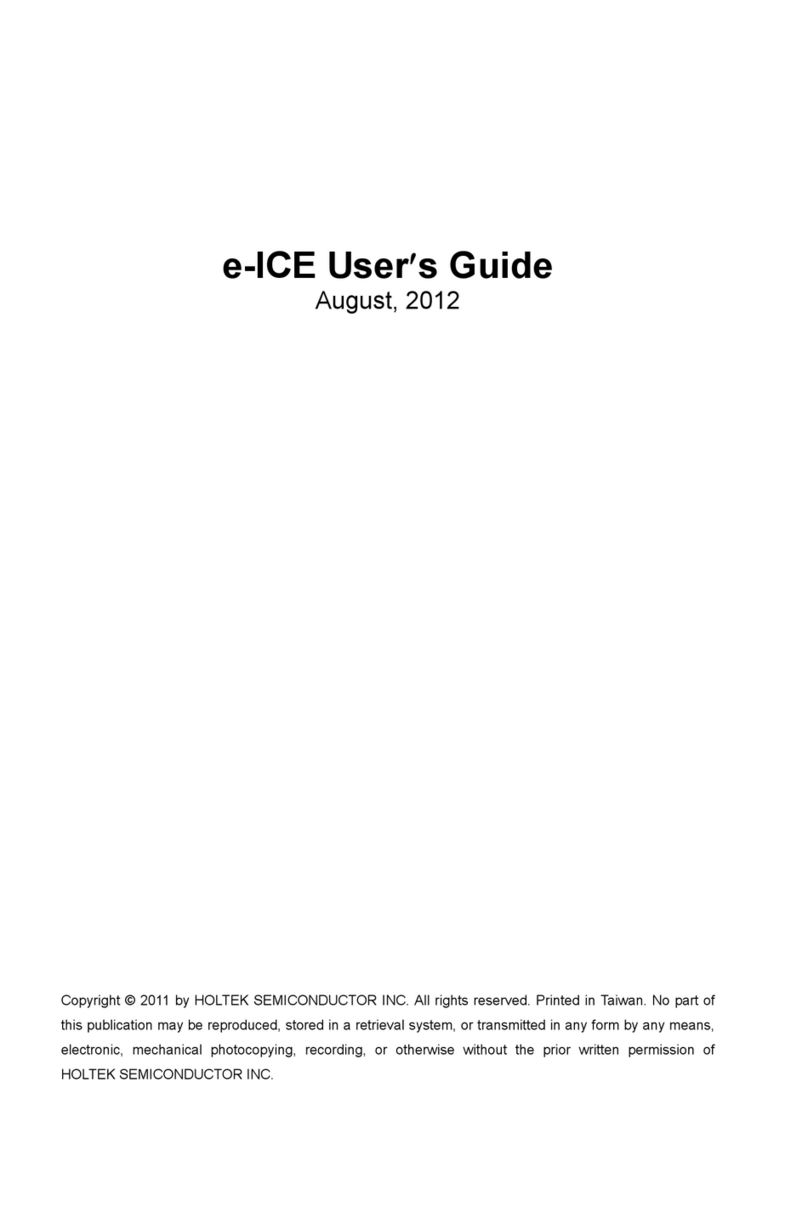
HT46R65/HT46C65
Rev. 1.90 10 February 14, 2006
reset by ²SET [m].i²and ²CLR [m].i². They are also indi-
rectly accessible through memory pointer registers
(MP0;01H/MP1;03H). The space before 40H is overlap-
ping in each bank.
After first setting up BP to the value of ²01H²or ²02H²to
access either bank 1 or bank 2 respectively, these banks
must then be accessed indirectly using the Memory
Pointer MP1. With BP set to a value of either ²01H²or
²02H², using MP1 to indirectly read or write to the data
memory areas with addresses from 40H~FFH will result
in operations to either bank 1 or bank 2. Directly ad-
dressing the Data Memory will always result in Bank 0
being accessed irrespective of the value of BP.
Indirect Addressing Register
Location 00H and 02H are indirect addressing registers
that are not physically implemented. Any read/write op-
eration of [00H] and [02H] accesses the RAM pointed to
by MP0 (01H) and MP1(03H) respectively. Reading lo-
cation 00H or 02H indirectly returns the result 00H.
While, writing it indirectly leads to no operation.
The function of data movement between two indirect ad-
dressing registers is not supported. The memory pointer
registers, MP0 and MP1, are both 8-bit registers used to
access the RAM by combining corresponding indirect
addressing registers. MP0 can only be applied to data
memory, while MP1 can be applied to data memory and
LCD display memory.
Accumulator -ACC
The accumulator (ACC) is related to the ALU opera-
tions. It is also mapped to location 05H of the RAM and
is capable of operating with immediate data. The data
movement between two data memory locations must
pass through the ACC.
Arithmetic and Logic Unit -ALU
This circuit performs 8-bit arithmetic and logic opera-
tions and provides the following functions:
·Arithmetic operations (ADD, ADC, SUB, SBC, DAA)
·Logic operations (AND, OR, XOR, CPL)
·Rotation (RL, RR, RLC, RRC)
·Increment and Decrement (INC, DEC)
·Branch decision (SZ, SNZ, SIZ, SDZ etc.)
The ALU not only saves the results of a data operation
but also changes the status register.
Status Register -STATUS
The status register (0AH) is 8 bits wide and contains, a
carry flag (C), an auxiliary carry flag (AC), a zero flag (Z),
an overflow flag (OV), a power down flag (PDF), and a
watchdog time-out flag (TO). It also records the status
information and controls the operation sequence.
Except for the TO and PDF flags, bits in the status reg-
ister can be altered by instructions similar to other reg-
isters. Data written into the status register does not alter
the TO or PDF flags. Operations related to the status
register, however, may yield different results from those
intended. The TO and PDF flags can only be changed
by a Watchdog Timer overflow, chip power-up, or clear-
ing the Watchdog Timer and executing the ²HALT²in-
struction. The Z, OV, AC, and C flags reflect the status of
the latest operations.
On entering the interrupt sequence or executing the
subroutine call, the status register will not be automati-
cally pushed onto the stack. If the contents of the status
is important, and if the subroutine is likely to corrupt the
status register, the programmer should take precautions
and save it properly.
Bit No. Label Function
0C
C is set if an operation results in a carry during an addition operation or if a borrow does not
take place during a subtraction operation; otherwise C is cleared. C is also affected by a ro-
tate through carry instruction.
1AC
AC is set if an operation results in a carry out of the low nibbles in addition or no borrow from
the high nibble into the low nibble in subtraction; otherwise AC is cleared.
2 Z Z is set if the result of an arithmetic or logic operation is zero; otherwise Z is cleared.
3OV
OV is set if an operation results in a carry into the highest-order bit but not a carry out of the
highest-order bit, or vice versa; otherwise OV is cleared.
4 PDF PDF is cleared by either a system power-up or executing the ²CLR WDT²instruction. PDF is
set by executing the ²HALT²instruction.
5TO
TO is cleared by a system power-up or executing the ²CLR WDT²or ²HALT²instruction. TO
is set by a WDT time-out.
6, 7 ¾Unused bit, read as ²0²
Status (0AH) Register





























